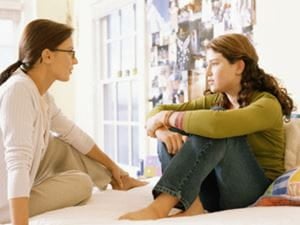
Picture this scene, a common situation that might sound similar to one you have encountered with your child at some point in time:
Charlotte, age 6, was embarking on the opening day of 1st grade. She was wearing new sneakers and her new Hello Kitty backpack. She would be taking the school bus to the elementary school about a mile away. Charlotte was apprehensive, about everything—1st grade in general, going to a school building that she hadn’t been in before, riding the bus. As she and her mom waited at the pick-up corner with several other parents and children, she was becoming unhappier by the minute.
When the bus pulled up, Charlotte got on, with a mournful look back at her mother. The following morning was worse. Charlotte was in tears before leaving the house. By the time they reached the corner, she was clinging to her mom, burying her face, saying the bus was going to make her get sick.
If that was you and your child, what would your reaction be? Here are some likely possibilities:
• You would reassure your child that everything was all right, don’t cry, no need to worry.
• You would tell her, before walking out the door in the morning, exactly what she could expect throughout the day to come and how she would handle all that.
• You’d tell her to tough it out, get on the bus, everybody goes to school, everybody gets through it, and so will she.
• You’d promise her a treat in the afternoon if she stopped crying now and went off with the other kids.
• You’d take her home before the bus arrived, thinking you’d get her to school later on in some way, once she calmed down.
• You’d let her stay home.
• You would ask her what ideas she had to make things easier for herself.
No one of these responses is inherently right or wrong, good or bad. How you act right then will depend in part on the details of the day, the child, what happened the week before, what’s going to happen next month, who else is on the scene, and other variables. But it will also have something to do with your style as a parent, the way you typically respond in trying moments. And we know that a parent’s actions and reactions over time to a child’s displays of fearfulness can either foster greater anxiety or reduce it.
In this chapter, we look at how the characteristics of anxious kids and their parents interweave, and at how being aware of and making some adjustments to the less helpful parental styles can change life for the better. At the same time, I want to reiterate a message I suggested in the previous chapter: Parents are not to blame for all their children’s problems! Your child didn’t “catch” an anxiety disorder simply from the genes you passed on to him. Neither did he become anxious because of everything that you’ve done wrong. Many influences in life can make kids anxious. You can’t control it all, but there is a lot you can do to help your child get back on track.


